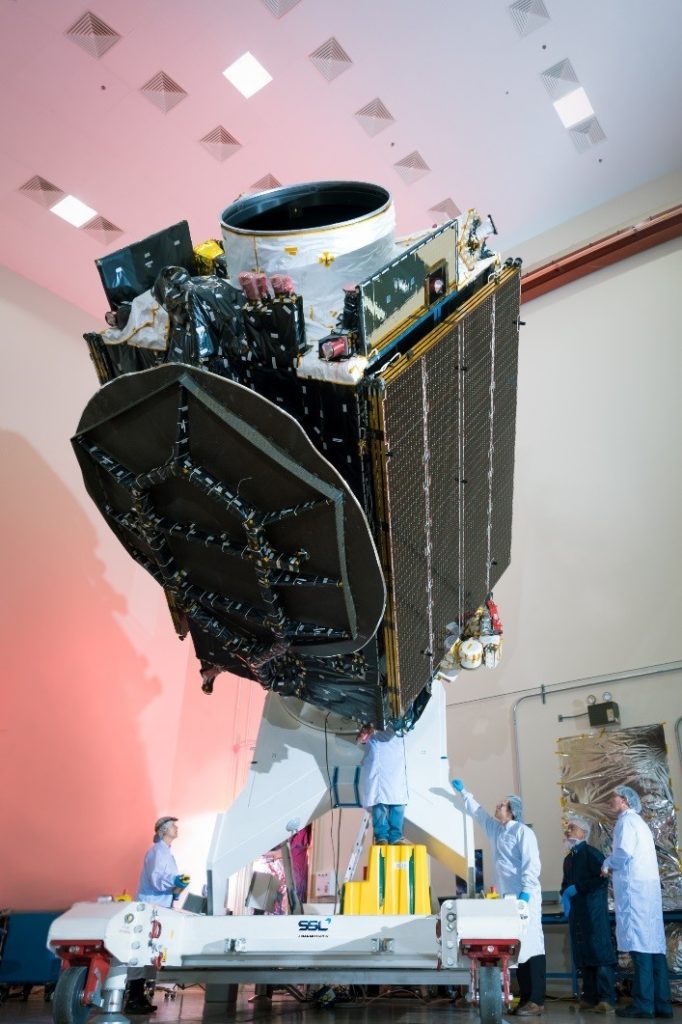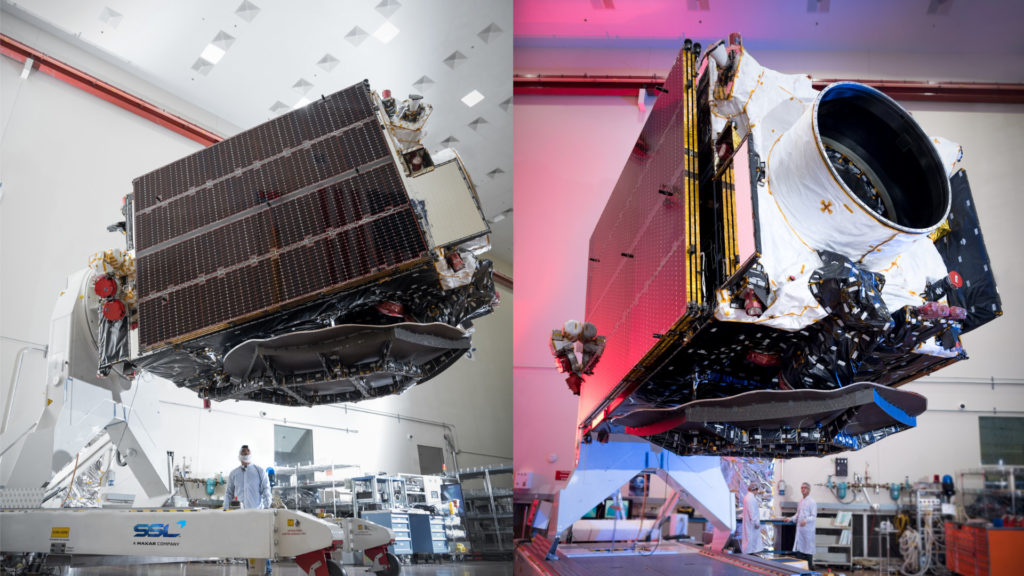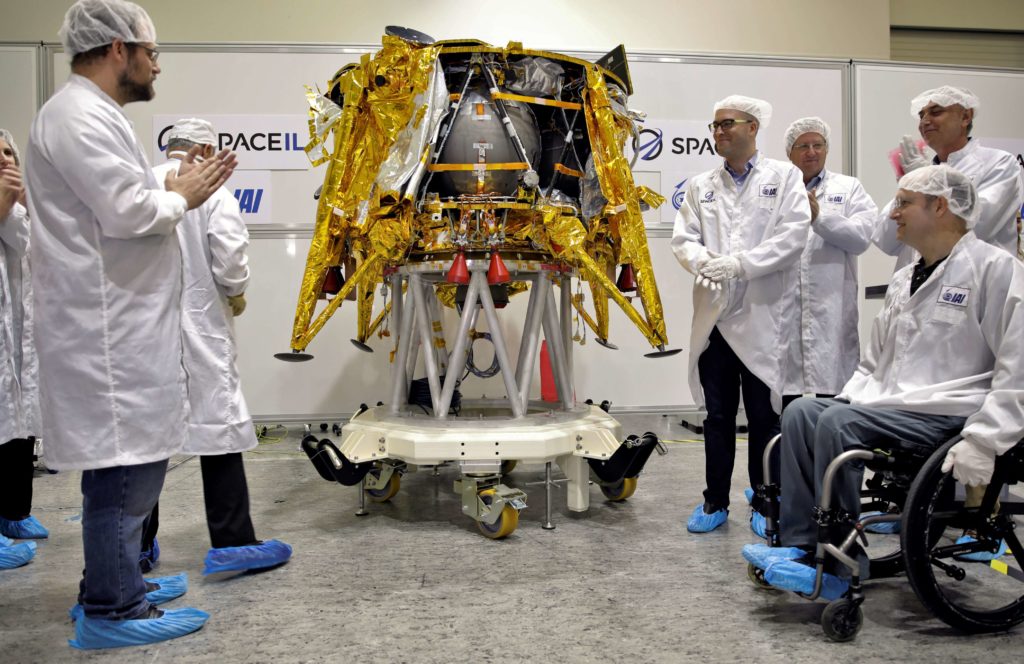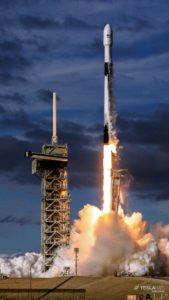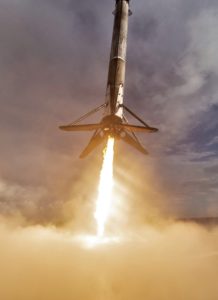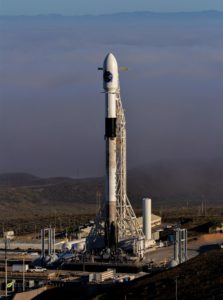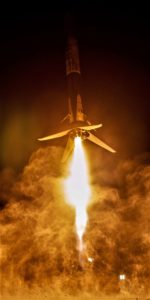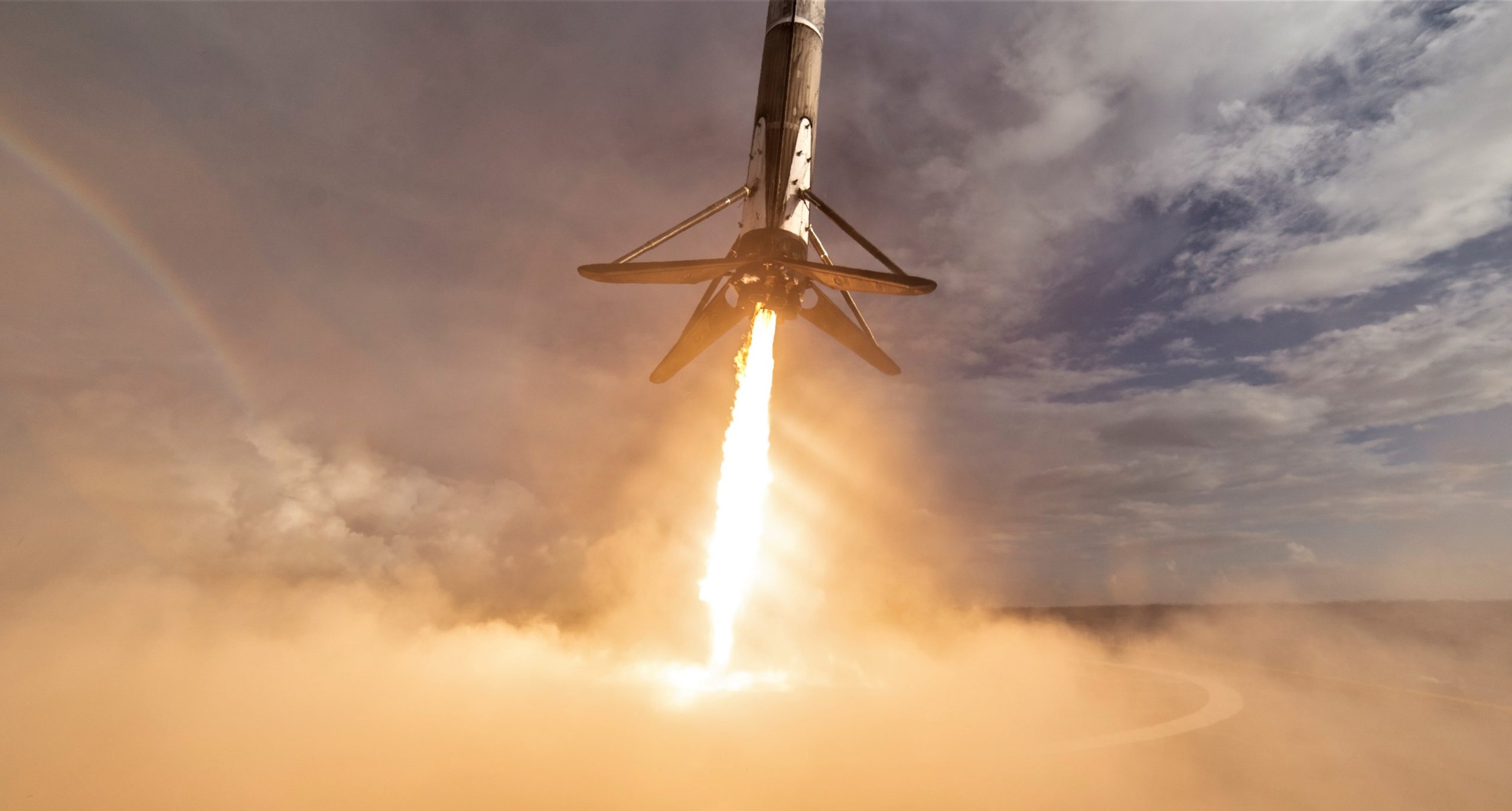
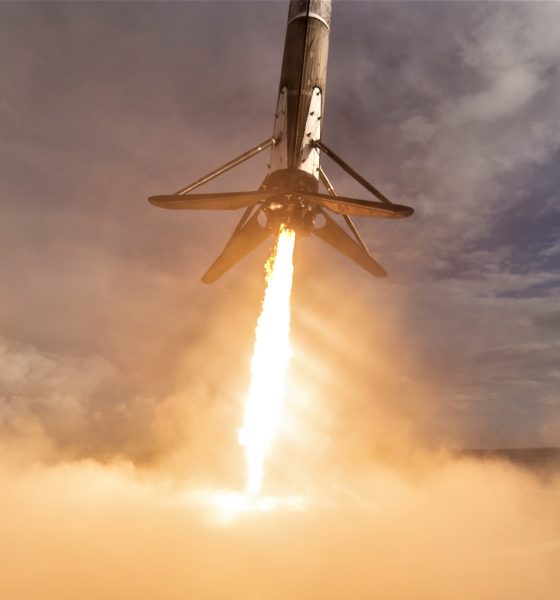
News
SpaceX nears Falcon 9 lunar rideshare launch as main satellite arrives in FL
SpaceX and customers Pasifik Satelit Nusantara (PSN), SpaceIL, and Spaceflight Industries are reportedly one month away from the NET February 18th launch of Indonesian communications satellite PSN VI (since renamed Nusantara Satu), commercial moon lander Beresheet, and additional unspecified smallsats.
In an encouraging sign that the mission’s launch date might hold, the PSN VI communications satellite – manufactured and delivered by Space Systems Loral (SSL) – arrived at SpaceX’s Cape Canaveral, Florida payload processing facilities in late December 2018 and is likely to be joined by SpaceIL’s Beresheet spacecraft in the next few weeks.
https://twitter.com/sslmda/status/1082427646921846784
Easily the most exotic rideshare mission yet in terms of the sheer variability and newness of almost every aspect, communications satellite PSN VI will not only be joined by the world’s first commercial lunar lander but also play host to rideshare organizer Spaceflight’s first dedicated rideshare mission to a high-energy geostationary transfer orbit (GTO), stretching approximately 200 to 36,000 km (120 to 22,000 miles) above Earth.
Led in large part by satellite contractor SSL’s recently-introduced PODS method of attaching rideshare satellite dispensers to larger geostationary satellites, the company’s main manufacturing focus, GTO or even full-GEO rideshare opportunities could open all kinds of doors for exotic but affordable smallsat missions beyond Earth orbit. If successfully implemented, one could foresee commercial, government, or academic entities with budgets that would have originally had them laughed out of doors actually be able to support their own dedicated missions to the Moon and perhaps even to other planets, asteroids, or comets.
Big Science, Small Packages
A pair of tiny, experimental spacecraft called #MarCO flew to Mars and fulfilled a their mission yesterday, relaying near-real-time data during @NASAInSight’s #MarsLanding. Find out more about the record-setting CubeSats: https://t.co/JOAaM2lHjx pic.twitter.com/IlNesoEonq— NASA JPL (@NASAJPL) November 27, 2018
Less than coincidentally, JPL (Jet Propulsion Laboratory) successfully launched, tested, and demonstrated a pair of small signal relay cubesats as viable communications infrastructure during Mars lander InSight’s November 2018 landing attempt, becoming the first smallsats ever to operate in deep space. While the utility of each MarCO cubesat was very limited, the program was an extremely successful technology demonstration and has likely opened a number of doors for smallsat passengers to join future interplanetary missions. Already, the European Space Agency (ESA) hopes to include multiple cubesats on an asteroid defense-focused mission to the Didymous asteroid system in the 2020s.
A couple of #CubeSats will join #ESA’s Hera mission towards a binary asteroid system to perform additional bonus science alongside the main mothership. #newspace #cubesat #space https://t.co/gu3BS4sgL0 pic.twitter.com/13iw7gh1u6
— D-Orbit (@D_Orbit) January 8, 2019
While SSL apparently tested PODS with success on the communications satellite Hispasat 30W-6, launched by SpaceX in March 2018, it appears that PSN VI may be the first purely commercial use of SSL’s offerings. Whatever the complex relationship is, it appears that PSN VI’s PODS were co-opted (ordered?) by Spaceflight, who then sold those spaces and managed the integration of customers with spacecraft that needed an orbit truly unique for cubesats.
Given the fact that there has been almost complete silence on Spaceflight’s GTO-1 rideshare mission and that the most recent use of PODS on Hispasat was reportedly funded and used by military research agency DARPA, it may actually be reasonable to conclude that Spaceflight is acting as the middleman for a number of satellites built or owned by military agencies, potentially explaining the radio-silence from Spaceflight’s normally talkative communications team.
- PSN-6, an SSL-built communications satellite weighing several thousand kilograms, arrived in Florida roughly 10 days ago. (SSL)
- PSN-6, an SSL-built communications satellite weighing several thousand kilograms, arrived in Florida roughly 10 days ago. (SSL)
- SpaceIL’s Beresheet moon lander. (SpaceIL)
- Beresheet is seen here prior to the spacecraft’s flight from Israel to Florida. (SpaceIL/IAI)
Regardless, this launch is bound to be a fascinating one from a trajectory design perspective. Whether or not Falcon 9’s upper stage is actually going to be involved in the task of helping lunar lander Beresheet on its way to the Moon, info from manufacturer and operator SpaceIL suggests that the small ~600 kg spacecraft will rely on an eccentric method of shifting orbits from around the Earth to intercept the Moon. Over the course of several months of small nudges in the right direction, Beresheet will eventually – and very gradually – oscillate on the tip of the gravitational peak between the two planetary bodies until it eventually slips down the lunar side to eventually intercept the Moon. While very slow, this optimized trajectory will be extremely efficient, allowing as much propellant as possible to be saved for the actual task of landing on the Moon.
Which rocket slipper fits?
Come launch day, the combined mass of PSN VI (Nusantara Satu), Beresheet, and unknown rideshare passenger spacecraft will most likely fall somewhere between 5500 and 6000 kg (~12,000-13,500 lbs), indicating that SpaceX’s Falcon 9 should be more than capable of placing the stack of satellites into a healthy geostationary transfer orbit before attempting to land aboard drone ship Of Course I Still Love You (OCISLY).
- Pad 39A seen after most extraneous Shuttle-era hardware had been removed, November 2018. (Tom Cross)
- Falcon 9 B1047.2 is seen here conducting its second successful drone ship landing. (SpaceX)
- Falcon 9 B1048 appears out of the fog prior to its second orbital-class launch. (Pauline Acalin)
- Falcon 9 B1048.2 landed at LZ-4 after its second successful launch. (SpaceX)
The question that remains, then, is which Falcon 9 rocket will be tasked with launching the unique mission. Given that SpaceX appears to be rushing full-speed-ahead to complete the next Falcon Heavy in time for a late-February or March launch debut, it seems very unlikely that SpaceX could preserve that aggressive FH launch schedule while also preparing a separate, new Falcon 9 booster for PSN VI. If that’s the case, then the two options at hand are Falcon 9s B1047.3 and B1048.3, both of which have previously launched twice and are currently at SpaceX’s Florida facilities.
In other words, it appears that SpaceX’s first commercial launch to the Moon might lift off on a flight-proven Falcon 9 booster, an unintended but thoroughly fitting precursor to what is hopefully a future full of highly reusable rockets and interplanetary (as in between two or more planetary bodies) spaceflight.

News
Elon Musk’s Grokipedia surges to 5.6M articles, almost 79% of English Wikipedia
The explosive growth marks a major milestone for the AI-powered online encyclopedia, which was launched by Elon Musk’s xAI just months ago.

Elon Musk’s Grokipedia has grown to an impressive 5,615,201 articles as of today, closing in on 79% of the English Wikipedia’s current total of 7,119,376 articles.
The explosive growth marks a major milestone for the AI-powered online encyclopedia, which was launched by Elon Musk’s xAI just months ago. Needless to say, it would only be a matter of time before Grokipedia exceeds English Wikipedia in sheer volume.
Grokipedia’s rapid growth
xAI’s vision for Grokipedia emphasizes neutrality, while Grok’s reasoning capabilities allow for fast drafting and fact-checking. When Elon Musk announced the initiative in late September 2025, he noted that Grokipedia would be an improvement to Wikipedia because it would be designed to avoid bias.
At the time, Musk noted that Grokipedia “is a necessary step towards the xAI goal of understanding the Universe.”
Grokipedia was launched in late October, and while xAI was careful to list it only as Version 0.1 at the time, the online encyclopedia immediately earned praise. Wikipedia co-founder Larry Sanger highlighted the project’s innovative approach, noting how it leverages AI to fill knowledge gaps and enable rapid updates. Netizens also observed how Grokipedia tends to present articles in a more objective manner compared to Wikipedia, which is edited by humans.
Elon Musk’s ambitious plans
With 5,615,201 total articles, Grokipedia has now grown to almost 79% of English Wikipedia’s article base. This is incredibly quick, though Grokipedia remains text-only for now. xAI, for its part, has now updated the online encyclopedia’s iteration to v0.2.
Elon Musk has shared bold ideas for Grokipedia, including sending a record of the entire knowledge base to space as part of xAI’s mission to preserve and expand human understanding. At some point, Musk stated that Grokipedia will be renamed to Encyclopedia Galactica, and it will be sent to the cosmos.
“When Grokipedia is good enough (long way to go), we will change the name to Encyclopedia Galactica. It will be an open source distillation of all knowledge, including audio, images and video. Join xAI to help build the sci-fi version of the Library of Alexandria!” Musk wrote, adding in a later post that “Copies will be etched in stone and sent to the Moon, Mars and beyond. This time, it will not be lost.”
News
Tesla Model 3 becomes Netherlands’ best-selling used EV in 2025
More than one in ten second-hand electric cars sold in the country last year was a Tesla Model 3.

The Tesla Model 3 became the most popular used electric car in the Netherlands in 2025, cementing its dominance well beyond the country’s new-car market.
After years at the top of Dutch EV sales charts, the Model 3 now leads the country’s second-hand EV market by a wide margin, as record used-car purchases pushed electric vehicles further into the mainstream.
Model 3 takes a commanding lead
The Netherlands recorded more than 2.1 million used car sales last year, the highest level on record. Of those, roughly 4.8%, or about 102,000 vehicles, were electric. Within that growing segment, the Tesla Model 3 stood far ahead of its competitors.
In 2025 alone, 11,338 used Model 3s changed hands, giving the car an 11.1% share of the country’s entire used EV market. That means more than one in ten second-hand electric cars sold in the country last year was a Tesla Model 3, Auto Week Netherlands reported. The scale of its lead is striking: the gap between the Model 3 and the second-place finisher, the Volkswagen ID3, is more than 6,700 vehicles.
Rivals trail as residual values shape rankings
The Volkswagen ID.3 ranked a distant second, with 4,595 used units sold and a 4.5% market share. Close behind was the Audi e-tron, which placed third with 4,236 registrations. As noted by Auto Week Netherlands, relatively low residual values likely boosted the e-tron’s appeal in the used market, despite its higher original price.
Other strong performers included the Kia Niro, the Tesla Model Y, and the Hyundai Kona, highlighting continued demand for compact and midsize electric vehicles with proven range and reliability. No other model, however, came close to matching the Model 3’s scale or market presence.
News
Tesla Model Y Standard Long Range RWD launches in Europe
The update was announced by Tesla Europe & Middle East in a post on its official social media account on X.

Tesla has expanded the Model Y lineup in Europe with the introduction of the Standard Long Range RWD variant, which offers an impressive 657 km of WLTP range.
The update was announced by Tesla Europe & Middle East in a post on its official social media account on X.
Model Y Standard Long Range RWD Details
Tesla Europe & Middle East highlighted some of the Model Y Standard Long Range RWD’s most notable specs, from its 657 km of WLTP range to its 2,118 liters of cargo volume. More importantly, Tesla also noted that the newly released variant only consumes 12.7 kWh per 100 km, making it the most efficient Model Y to date.
The Model Y Standard provides a lower entry point for consumers who wish to enter the Tesla ecosystem at the lowest possible price. While the Model 3 Standard is still more affordable, some consumers might prefer the Model Y Standard due to its larger size and crossover form factor. The fact that the Model Y Standard is equipped with Tesla’s AI4 computer also makes it ready for FSD’s eventual rollout to the region.
Top Gear’s Model Y Standard review
Top Gear‘s recent review of the Tesla Model Y Standard highlighted some of the vehicle’s most notable features, such as its impressive real-world range, stellar infotainment system, and spacious interior. As per the publication, the Model Y Standard still retains a lot of what makes Tesla’s vehicles well-rounded, even if it’s been equipped with a simplified interior.
Top Gear compared the Model Y Standard to its rivals in the same segment. “The introduction of the Standard trim brings the Model Y in line with the entry price of most of its closest competition. In fact, it’s actually cheaper than a Peugeot e-3008 and costs £5k less than an entry-level Audi Q4 e-tron. It also makes the Ford Mustang Mach-E look a little short with its higher entry price and worse range,” the publication wrote.
